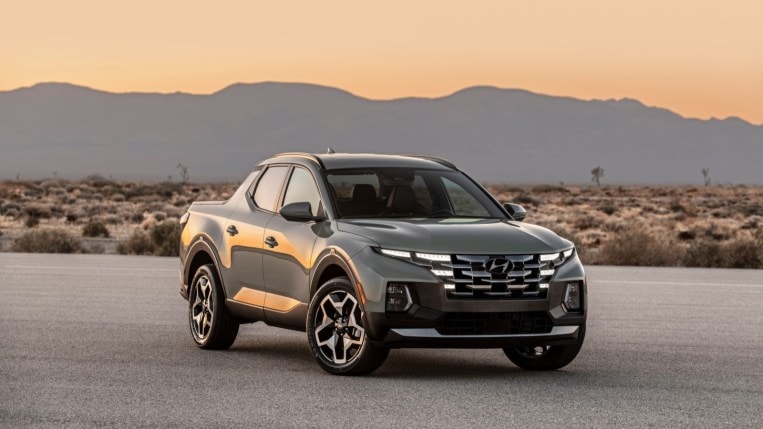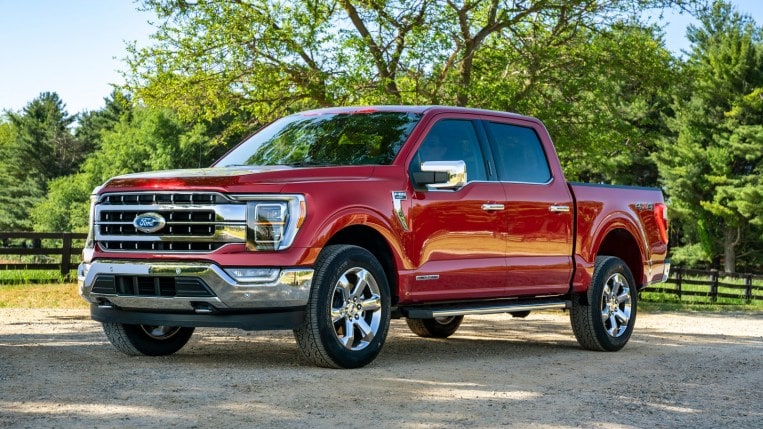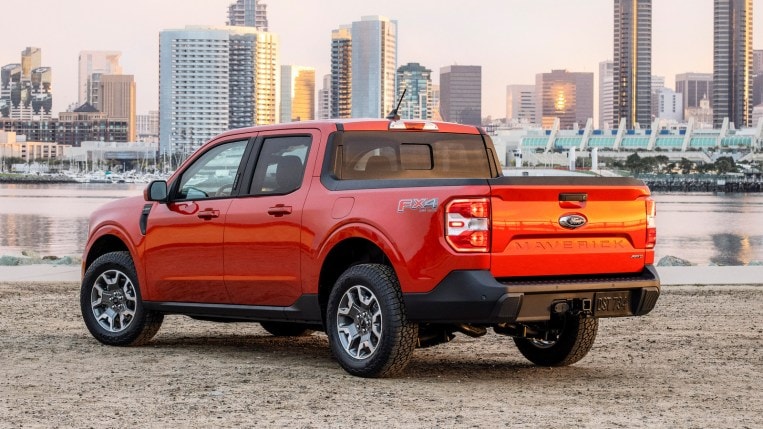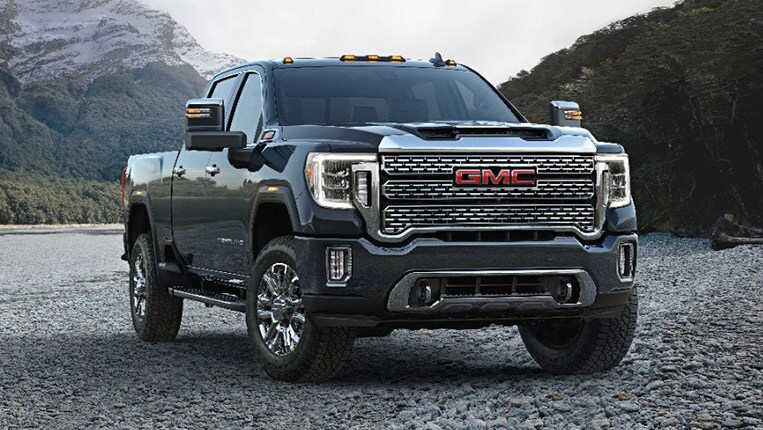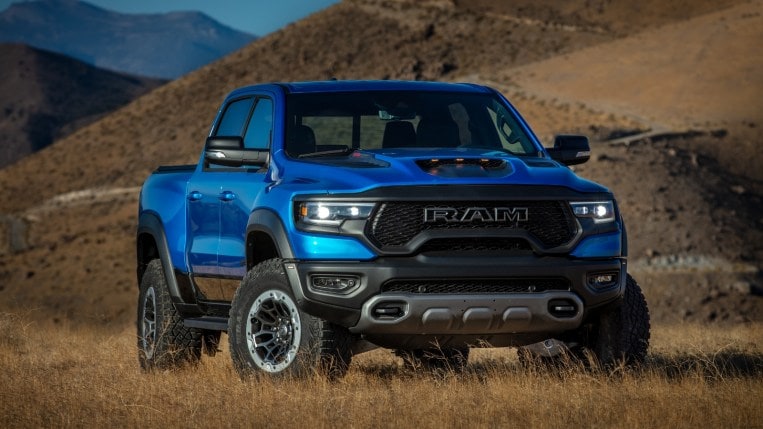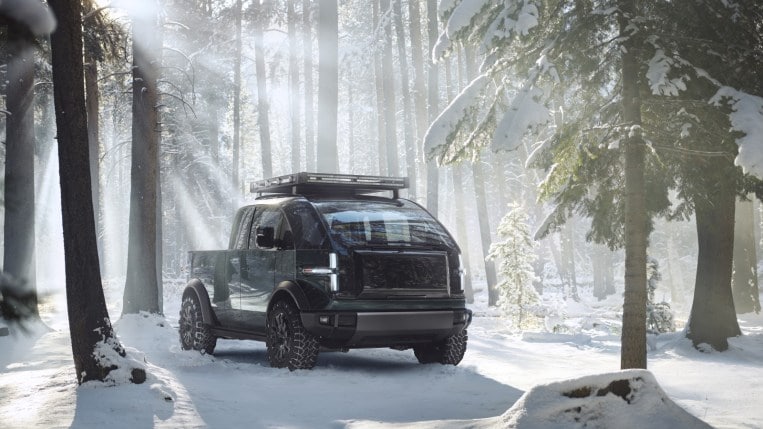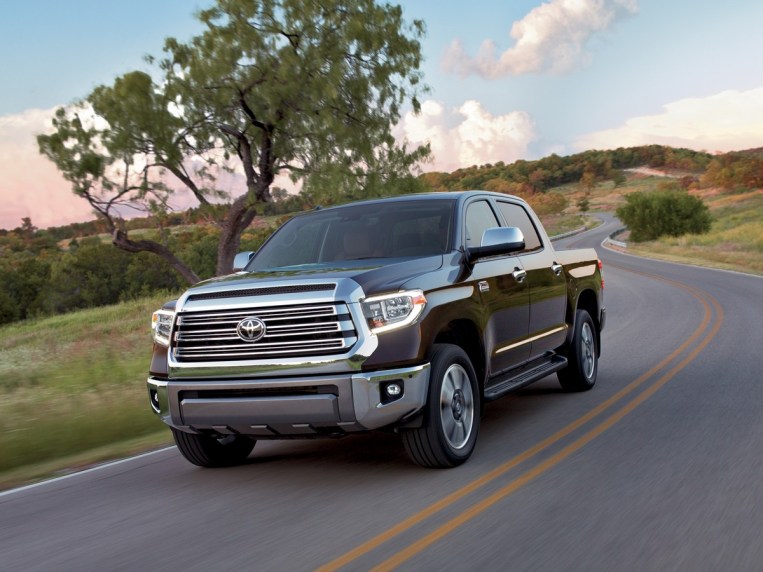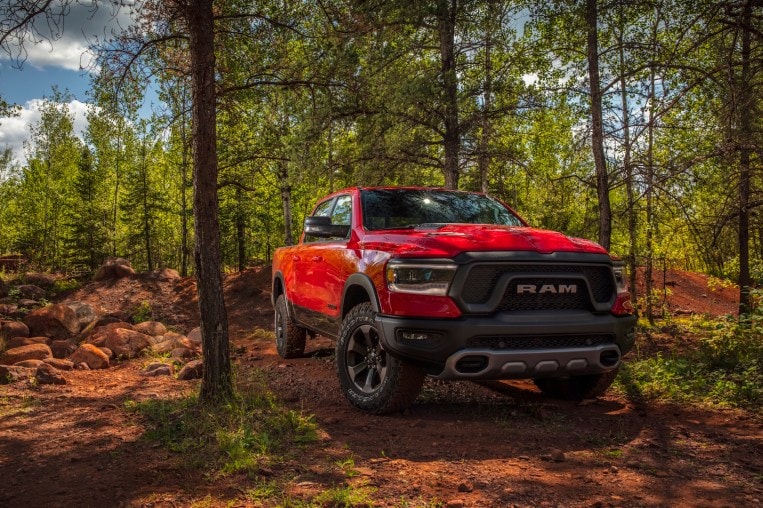Truck Buying Guide: Everything You Need to Know
Pickup trucks are the most versatile vehicle available to the average car shopper. Depending on model and options, they can carry a family in comfort, tow a travel trailer, haul furniture from the antique store, and handle snow and ice with sure-footed safety.
And they can make you friends. Everyone needs a truck, or at least a friend with a truck.
American shopping habits prove this. A pickup truck has been the best-selling vehicle in America for 44 straight years (the Ford F-Series). Last year, Americans bought more trucks than passenger cars (though we bought still more SUVs).
But trucks come in an immense variety of configurations. Different cab styles, bed sizes, and drivetrains mean even a single truck from a single manufacturer can effectively be a dozen different vehicles. Trim levels and option packages mean two trucks of the same make and model can carry wildly different price tags (a 2021 Ram 1500 will run you $28,855. The most expensive can reach around $90,000 with options).
And there’s no sign the proliferation of trucks will slow down anytime soon. For the 2022 model year, entirely new categories of trucks are appearing, including electric pickups and the first genuinely compact trucks in a generation.
This truck guide will help you find which one works best for you.
Why You Might Need a Pickup Truck
A full-size SUV, or midsize SUV with a torquey engine and tow package, can do much of what a pickup truck can do. They’re often a bit easier to live with day-to-day as well. So, when do you need a truck?
When you need a truck bed, trucks have more capacity for carrying stuff than any other form of vehicle. They also carry it separate from the passenger cabin, which can be useful if you regularly carry building materials, dirt, plants, or anything else that leaves you hosing out the thing you carried it in.
Trucks can typically tow more than even the most powerful SUVs as well. So if large trailers or boats are part of your routine, you’re probably better off with a pickup.
Trucks hold their resale value a bit better than SUVs, too. Many of today’s vehicles stay in good running condition longer than most did just a generation ago. So chances are, you’re going to hold onto your next vehicle for a long time. The average vehicle on American roads is over 12 years old. But when the time comes to part ways with it, there’s a better market for old trucks with some life left in them than for old SUVs.
Why You Might Not Need a Pickup
If you don’t haul a thing or two regularly, though, you might be happier with an SUV. Some are even built on the same ladder frames as pickups and can handle rough weather and off-road driving just as well.
They also offer better fuel economy to save you money in the long run. Their suspensions are tuned for more passenger comfort. And, crucially, they’re often safer. This year, the Insurance Institute for Highway Safety (IIHS) has awarded its coveted Top Safety Pick Plus award to 21 midsize or large SUVs and no trucks.
Types of Trucks
Trucks are usually differentiated by size. If you’re truck shopping, you’re most likely going to find yourself comparing trucks to similarly-sized competition — though, in some cases, it makes sense for buyers to consider a smaller truck.
Full-Size Trucks
Full-size trucks are the most popular trucks in America and are treated like the flagship products of the Detroit Three automakers. In 2020, the three best-selling vehicles in America were full-size trucks (the Ford F-150, Chevy Silverado, and Ram 1500, respectively). You may occasionally hear these referred to as “half-ton trucks” because most have a payload capacity of at least 1,000 pounds. Still, that terminology has grown outdated and is not particularly accurate to today’s trucks.
Our 2021 Best Buy in the category is the Ford F-150.
Those shopping in this size range should also know that two popular full-size trucks are close to identical. General Motors builds its full-size truck as both the Chevy Silverado and the GMC Sierra. The Sierra’s starting price is slightly higher than the Silverado’s, and it carries slightly more standard equipment. But, by the time you add typical options and trim levels, the two are often so similarly priced that it makes sense to comparison shop them.
See the Best Pickup Trucks for 2021
Midsize Trucks
Smaller than full-size trucks, midsize trucks don’t usually sell as briskly. Only one — the Toyota Tacoma — cracked the 10 best-selling vehicles in America in 2020.
But they’re an excellent solution for many buyers. You might imagine they’re less capable than full-size trucks, but that isn’t always the case. A midsize truck may be a bit less powerful than its full-size cousin. But crucially, it also weighs less, and a lot of a truck’s power goes to moving itself.
In their base configurations, most can haul and tow similar sums to what a base model full-size truck can carry. Their smaller beds can handle less volume but not much less weight. Their moderate size makes them easier to handle in traffic and parking lots.
Our 2021 Best Buy in the Midsize Truck segment is the Toyota Tacoma.
See our Midsize Truck Comparison.
Compact Trucks
Until recently, there were no truly small trucks on the American market. But historically, Americans had an appetite for small trucks that could carry the gear for a weekend project or family camping trip while slotting easily into the parking lot at work.
Automakers have recently realized they’re not serving that segment of the market well, and two new small trucks — the Ford Maverick and Hyundai Santa Cruz — will reach dealerships this year. Both look like excellent daily drivers that will be easy to live with, even in urban environments. Both have small beds that will not serve as replacements for larger pickups but will facilitate a weekend bike trip or garden center haul.
See our Ford Maverick vs. Hyundai Santa Cruz Comparison.
Heavy Duty Trucks
Heavy-duty trucks like the Ram 2500 or GMC Sierra 2500 HD are built on the same frames as full-size trucks but stretched to proportions that rarely make sense for anyone who isn’t using them professionally.
They make outstanding work trucks, though, with payload and towing capacities well beyond what any other truck can claim. Six-wheeled “dually” models are the champions of towing. They can pull the largest boats and horse trailers — though they cost more up front and in maintenance.
See Our Best Heavy Duty Truck Resell Value Rankings.
High-Performance Trucks
Just as car buyers have an appetite for high-performance sports cars, truck buyers sometimes seek out vehicles that push the limits of automotive engineering. In the truck world, these are usually high-performance models of regular trucks.
But their capabilities are highly specialized, so they are often not as capable in day-to-day usage as the trucks they’re based on. For instance, Ford’s legendary F-150 Raptor is an off-road beast with arguably the most capable suspension ever devised … but its payload capacity is lower than that of any other F-150. The Ram TRX boasts a 702 horsepower V8 at home on the drag strip. But its payload capacity is below that of any other Ram.
Electric Trucks
The auto industry is moving toward electric power, and trucks will come with it. Automakers have just begun unveiling their first electric trucks. Already, Ford has an electric F-150 (the F-150 Lightning) on the way, GMC has its Hummer EV pickup, and Chevrolet plans to announce an electric Silverado soon. Several startup companies are building electric pickups, such as Rivian and Canoo, though none have delivered a truck just yet.
And then there’s Tesla’s future-punk Cybertruck, which almost defies description. Since no buyer has an electric truck in their driveway yet, there are many unanswered real-world questions about how they will work and what a full bed does to their range.
RELATED STORIES: Ford F-150 Lightning vs. Tesla Cybertruck Comparison: The Pickup Truck, Re-invented
Luxury Trucks
Just as some buyers seek out sedans with leather seating surfaces, active sound-dampening, and high-end sound systems, so do some truck buyers. Most luxury automakers don’t sell trucks in the United States (see the ill-fated Lincoln Blackwood if you’re curious what such an experiment would look like). But many truck builders offer a luxury trim. Trucks like the GMC Sierra Denali and Toyota Tundra 1794 Edition bring features like heated and ventilated seats, 19-speaker sound systems, and automatic running boards that retract for driving.
Diesel Trucks
For those buying trucks for towing, hauling, and any other kind of heavy-duty work, a diesel truck is by far the best option. These trucks have a clear advantage in terms of torque and towing capacity. The 2021 Ford F-150 Diesel has a V6 engine, 570 lb-ft of torque, and a whopping 12,700 lbs of towing capacity.
While the major turn-off of diesel trucks would be, well, the more expensive diesel fuel, the car makes up for it with its impressive fuel economy. The 2021 Ram 1500 EcoDiesel gets 32 mpg highway, which is on par with many SUVs.
Truck Engineering
Trucks are designed to meet a different set of requirements than cars or SUVs. While they share some parts, they are mechanically different creatures. You don’t need an engineering degree to understand them. But there are some basic facts you should know.
Frames
The biggest mechanical difference between a truck and a car is the frame each sits on. Cars are built with “unibody construction,” meaning the body and chassis are built as a single structure. This gives them tighter handling characteristics and a smoother on-road ride. But it means that off-road, they cannot flex to move over uneven ground.
Trucks are built with body-on-frame construction, meaning the chassis is separate from the body. This makes the structure of a truck much more flexible than that of a car. Trucks achieve better traction over rough, off-road surfaces because their frames can flex to help keep all wheels in contact with the ground. But that same flexibility gives them a rougher on-road ride and looser handling.
A complication — there are three unibody trucks currently for sale in the U.S. Both the Ford Maverick and Hyundai Santa Cruz are unibody, giving them better road manners and limited off-road capability. The midsize Honda Ridgeline is the same.
SUVs are a mixed bag — some are unibody, some are body-on-frame. This gives some truck-like towing power and others car-like comfortable rides.
Truck Cab Types
Each truck manufacturer uses its own language to describe the configuration of its cabins. Trucks come with either two or four doors and with, or without, back seats.
Traditional 2-door, 2-seat trucks are usually called “regular cab” or “standard cab.”
Some trucks have two doors but four seats. Owners access the rear seats by sliding the front seats forward. Toyota calls this configuration “access cab.” Ford calls it “super cab.” Chevy calls it “double cab.” This configuration is useful for those who will rarely, but sometimes, need to carry more than two people.
Some trucks have full 4-door, 5-seat cabins, much like sedans or SUVs. Toyota calls this configuration “Double Cab.” Ford calls it “Super Crew.” Chevrolet calls it “Crew Cab.” Ram calls it “Quad Cab.” This configuration is most useful for buyers whose truck will double as a family car or those who routinely carry a full crew to the job site.
Truck Bed Lengths
The exposed bed is what sets a truck apart from an SUV. Beds are available in several lengths, and most manufacturers mix and match cabin types with bed lengths.
Full-size trucks are generally available with beds from around 5.5 feet to around 8 feet long. Midsize trucks offer beds around 5 to 6 feet long. The two new compact trucks (Ford Maverick and Hyundai Santa Cruz) coming to market this year will offer beds around 4.5 feet long. Most manufacturers offer an optional bed extender that temporarily lengthens a bed for carrying oversized objects but isn’t suitable for everyday use.
Truck beds are no longer simple open-top boxes. Most today come with extensive movable tie-down points designed to accommodate ropes or ratchet straps. Some have lockable storage compartments built into the sides or floor. Many have optional power outlets in the bed for use with power tools or tailgate stereos.
Speaking of tailgates, many trucks today offer optional tailgates that go well beyond simply holding items into the trunk. The MultiPro tailgate on the Chevy Silverado and GMC Sierra, for instance, has six configurations, including one where it forms a handy step to help you climb into the bed (complete with raised handgrip).
Drivetrains
Most trucks are offered in rear-wheel-drive (RWD) and 4-wheel-drive (4WD) configuration. Truck manufacturers tend to advertise this as 4×2 and 4×4. The two compact trucks — the Hyundai Santa Cruz and Ford Maverick — come in either front-wheel drive (FWD) or all-wheel drive (AWD).
Each has its own advantages. Rear-wheel-drive trucks are less expensive and can generally out-tow their 4WD counterparts (because they are lighter, and a truck pulling a trailer is also pulling its own weight). And, while no truck handles with the agility of a car, an RWD truck has more pleasant handling than a 4WD truck.
A 4WD truck, meanwhile, is more capable off-road and in foul weather conditions. And, while they are more expensive upfront, 4WD trucks hold higher resale value.
Virtually every truck for sale in the U.S. today is available only with an automatic transmission. Buyers can still get a manual transmission in the Jeep Gladiator and Toyota Tacoma in the 2021 model year.
Trucks are historically advertised for their powerful engines, which can help haul and tow heavier loads. However, we should caution that the most powerful engine option available is not always the best choice. For those who will rarely use their truck to tow, the fuel savings you get with a V6 may mean more to you than the added power you never use in a big V8.
Towing and Payload
The two primary reasons to buy a truck are the two things trucks do better than any other kind of vehicle — hauling and towing.
Each is a complex subject we cover at length elsewhere.
Our Towing Capacity Guide will guide you through everything you need to know if you’re searching for a tow vehicle. A hint — because each truck is available in many configurations, one truck model can have many tow ratings. And advertised towing capacities almost always refer to a specialized model your local dealer probably doesn’t have in stock.
Our Payload Capacity Guide explains hauling in detail. One tip — contrary to popular belief, payload capacity doesn’t refer to how much a truck can carry in its bed. The payload includes passengers.
Trucks and Safety
Today’s trucks are much safer than the trucks of a generation ago. But, with modern safety equipment, the old idea that the larger vehicle is always safer in an accident no longer holds true. Among 2021 full-size trucks, only the Ram 1500 manages a score of “good” in every crash test the IIHS performs.
Active safety systems once common only to luxury cars have begun to make their way into the truck market. Forward-collision alert with pedestrian detection, blind-spot warning, automatic emergency braking, lane-keeping assist, and similar technologies are now available on most pickups. However, they are added-cost options in many cases.
Full-size trucks face an additional safety concern that buyers should be aware of — as they’ve grown larger in recent years, it’s simply getting harder to see out of them. A 2021 Consumer Reports study found that trucks were 11% higher off the ground and 24% heavier on average today than they were in the year 2000.
This gives them huge front blind spots. CR found that full-size trucks have a front blind spot an average of 11 feet longer than a comparable sedan and 7 feet longer than an SUV. If you live in an urban area or have small children, these are vital safety considerations. Emergency braking systems that can detect a pedestrian could help ease this safety concern, but they remain an added-cost option on many trucks.
Price
Automakers tend to make just three or four trim levels with cars, often with only one or two engine choices and one or two transmission choices.
Trucks are a different story. Each model of truck offers a stable of trucks. There can be immense variation in price and feature content between two versions of any one pickup. The 2021 Ford F-150, for instance, can range from $29,200 for a basic 4×2 work truck up to $76,550 for a V8-powered 4×4 Limited model with the max trailer tow package and some luxurious interior features.
To find the price range for the truck you’re considering, check out our valuation tool for new and used vehicles.
Cost to Own
Price, however, is just one factor in how a new truck affects your budget. A true accounting of cost to own considers depreciation, fuel costs, repair and maintenance, and insurance costs.
Our 5-year cost-to-own awards can help you make the right financial decision. A preview — the average full-size truck costs $52,732 over five years, but the award winner in the segment can save you nearly $5,000 over that time. The average midsize truck costs $42,840, with the segment leader saving more than $2,000. And the same manufacturer built both.
Performance and MPG
Manufacturers build trucks with capability in mind first and often compromise fuel economy to get it. The most powerful trucks routinely see EPA ratings in the low teens.
Yet, in recent years, truck builders have been using every trick at their disposal to improve truck fuel economy. In its most recent Automotive Trends Report, the EPA said that trucks had seen a larger improvement in fuel economy and emissions than any other vehicle category in recent years.
They’ve done this by making smaller engines more powerful — Ford’s F-150 hybrid, for instance, manages 430 horsepower from the combination of a turbocharged V6 and electric motors. A generation ago, V8 engines struggled to output that kind of power.
The most fuel-efficient large trucks are diesel-powered. A 4×2 2021 Chevy Silverado with a 3.0-liter turbodiesel inline 6-cylinder engine is rated for a sedan-like 27 mpg in combined driving.
The new Ford Maverick small truck, meanwhile, carries a hybrid drivetrain even in its base trim. Ford says it will get up to 40 mph in city driving (the EPA has not yet tested this claim).
To ensure that you get the best performance from your truck, keep your truck driving with the correct tires and keep them properly maintained. You can learn more about choosing the right tire and maintenance from our Tires Guide.

